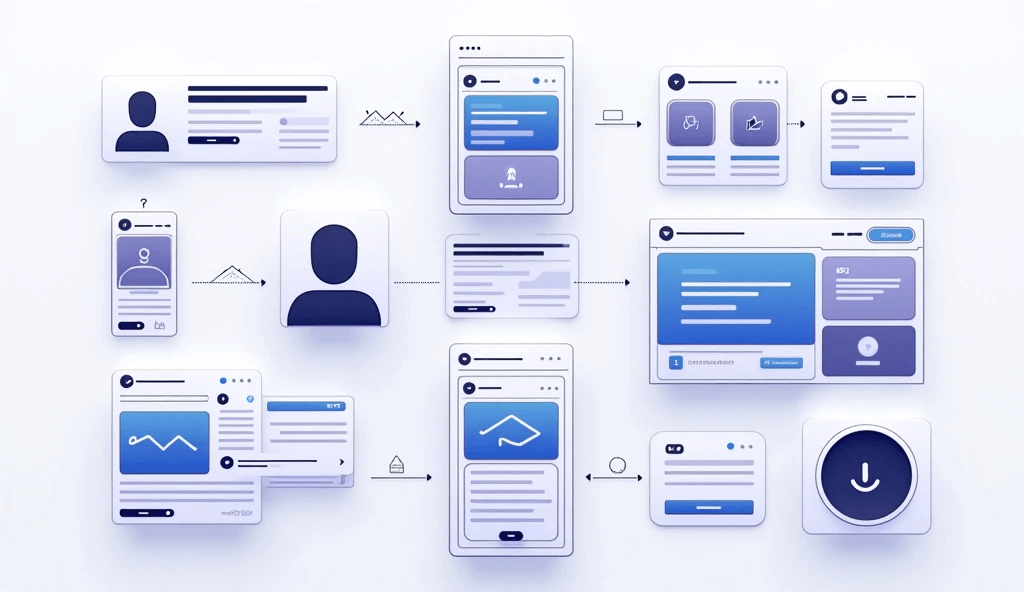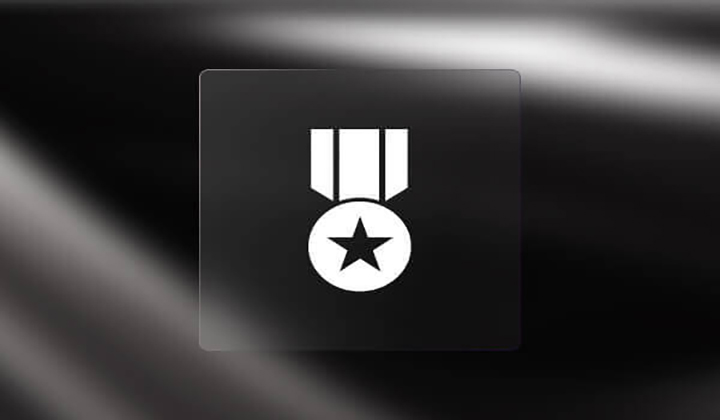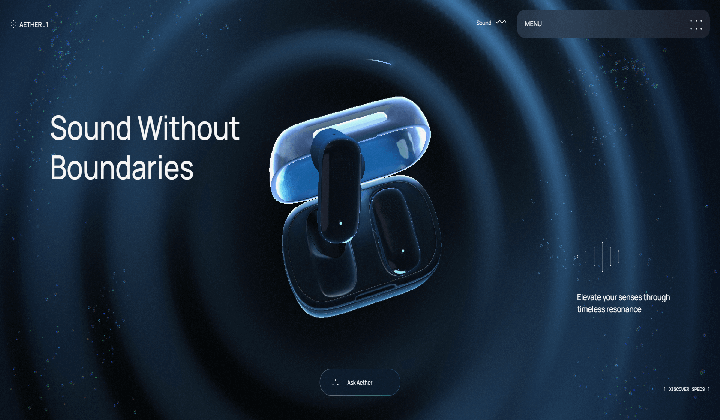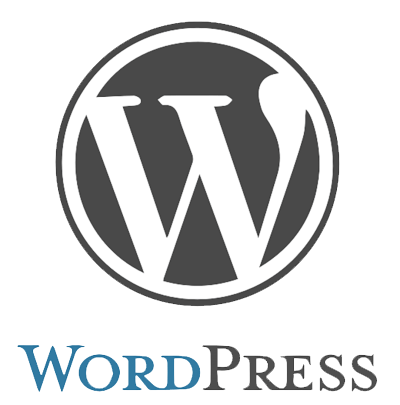Complete Website Setup: From Planning to Launch

Before building a successful website, comprehensive and clear planning is the key. The article “Complete Guide to Website Setup: A Full Process Analysis from Planning to Launch” systematically explains the entire website construction process, from early-stage web content planning, visual design concepts, user experience optimization, to technical implementation of functional modules and deployment, progressively presenting a complete path from nothing to a fully built website.
This guide is especially suitable for individuals or businesses who are conceptualizing a website but are unsure where to start. By deeply analyzing the goals and key operational points of each critical stage, it helps you clarify the overall framework of website building and establish a systematic construction mindset and execution process.
The final presentation and future operational results of a website often depend on the quality of the initial planning. A truly high-quality website is never a rushed product but the result of thoughtful, clear-structured execution. This article hopes to help you stay on the right track from the very beginning through a full process analysis, making your website a powerful vehicle for achieving personal branding, business expansion, or online services.
To facilitate efficient reading and quick access to needed content, this article will unfold according to the preset chapter directory. Each chapter title includes embedded jump links, allowing you to selectively read relevant sections based on your needs. Simply click on the subsection titles in the directory to smoothly jump to the corresponding content.
The original intention of this directory design is to help readers save search time and more effectively grasp the core knowledge and practical points of each stage of website construction. Whether you wish to read through systematically or focus on a specific part, you can flexibly use it to improve reading efficiency and depth of understanding.
- Website Page Planning and Content Strategy
- Website Visual Design and User Experience Optimization
- Website Development and Function Implementation
- Submitting the Website to Search Engines for Launch and Operation
一、Website Page Planning and Content Strategy

The first step in website construction begins with clear page planning and content strategy. This stage determines the overall site architecture and content direction, and serves as the foundation for subsequent design, development, and optimization tasks. Without a systematic layout of content and pages at the start, even a visually stunning site will struggle to achieve commercial goals or gain long-term recognition from search engines.
Page Planning: Anchoring Search Intent and Commercial Value
Page planning is not merely about deciding “how many pages are needed,” but involves systematically mapping out topic scopes that are highly relevant to user needs and commercial value, centered on the website’s core objectives.
From the perspective of SEO, this process essentially corresponds to a structured response to “search intent.” It requires analyzing the various search demands that target users might express in search engines, then selecting keywords or topics with commercial conversion potential. Subsequently, relevant pages are built around these high-value intents to ensure comprehensive and precise coverage of target intents in the site structure.
It is important to emphasize: although every website will have fixed common core pages, there is no so-called “standard page count” for strategic, goal-driven website design and development. The number of pages should entirely depend on the company’s service structure, the complexity of user journeys, and the SEO and conversion functions that the content can support.
Content Strategy: Specifying Page Themes
After completing the page structure planning, the next step is content strategy for each individual page. The core of content strategy is to clearly define the information hierarchy, structural logic, and user reading path centered around the target theme of each page. This process involves not only the textual content itself but also title design, the pairing of images and videos, CTA button settings, and more. In fact, content strategy and page planning are two sides of the same coin: pages are containers for information, while content is the core engine driving conversions.
Common Core Pages of a Website
Although the page structure of each website should be flexibly customized according to actual needs, in the vast majority of projects, there are some pages that almost all websites require. These pages not only carry the task of basic information delivery but also support the overall SEO structure:
HOME
The first impression window of the brand image, it needs to clearly convey the website’s main purpose, service scope, and core value.
Products/Services Page
Focuses on showcasing the core business content and is a key area for achieving conversions. It is best to set up an independent page for each service/product for optimization.
Client Cases or Success Stories Page
Enhances user trust and reflects actual solutions and client feedback, especially suitable for B2B or customized service websites.
About Us
Displays brand philosophy, team background, and development history, which is a key component in building trust and emotional connection with the brand.
Contact
Provides convenient contact information, encouraging users to actively reach out or submit inquiries, also serving as a conversion endpoint for potential customers.
二、 Website Visual Design and User Experience Optimization

In the overall website construction process, visual design and user experience (UX) optimization are critical bridging steps. They not only determine users’ first impressions of the website but also directly influence user behavior and retention/conversion on the site. A high-quality website requires not only impressive visual expression but also smooth processes and clear user interaction logic.
Visual design conveys brand value, while user experience determines actual behavior. Only by closely combining aesthetic creativity with usability logic can a truly engaging and conversion-enhancing website be created. In the website construction process, visual design and user experience are not separate stages but an integrated, complementary system.
Brand-Oriented Visual Design
Visual design is not only an expression of aesthetics but also an external embodiment of brand strategy. A successful website visual style must start from brand positioning and be extended and unified around the brand’s tone.
Consistent Brand Visual System
Visual design must be built upon the brand identity system, including consistent application of colors, fonts, graphic elements, and layout logic. Even though web presentation can be creative, such creativity must serve the brand itself and cannot deviate from the overall identity.
For example, technology brands tend to adopt clean and calm blue-gray color schemes; lifestyle brands may prefer warm and friendly soft colors. Every element in the design should help users clearly perceive the core temperament of the brand within the first second of entering the website.
Clear Themes and Visual Focus
The visual theme of each page should revolve around its content goals. Techniques such as contrast, whitespace, and image guidance are used to naturally direct the user's attention to key content areas. The homepage may emphasize the brand value proposition, while product pages should focus on product features and differentiating advantages.
Unique and Consistent Website Style
The ultimate output of the visual style is to create an overall impression that users can "remember at a glance." By consistently applying element styles (for example: illustration style, minimalist e-commerce style, magazine style, etc.), it not only enhances recognition but also helps users build brand memory through multiple visits.
User Experience Optimization: Enhancing the Full Chain from Perception to Interaction
User experience (UX) optimization is not just about having a visually appealing interface or clickable buttons; it includes the complete logical chain from page load speed to every click operation, covering multiple dimensions such as performance, flow, feedback, and usability.
Performance and Smooth Access
Website loading speed is the first threshold of user experience. Whether it’s homepage loading time, image loading delay, or multi-device responsiveness, all affect user dwell time and bounce rates. Lightweight design, image compression, CDN acceleration, and front-end caching should all be prioritized for optimization.
Clear and Predictable Interaction Logic
Interaction design is not only about having a response after a click but more importantly about having a clear flow, reasonable paths, and timely feedback. A good form design should include progress indicators, error messages, and input suggestions. Complex functional modules such as shopping processes, user registration, and profile completion should have complete path planning to ensure users always know “what to do next.”
Accessibility and Usability
Regardless of whether users access the website via desktop, mobile, or under weak network conditions, basic interaction functions should always be available. Additionally, attention should be paid to the experience of different user groups, such as font size adjustment, keyboard operation friendliness, and color contrast meeting accessibility standards.
三、Website Development and Function Implementation

After completing page planning, content strategy, and visual design, the website construction officially enters the “development and function implementation” phase. The core task of this phase is to transform design drafts into operational web pages, realizing the preset functional logic through front-end and back-end programming, making the website truly interactive and business-capable. This process involves purely technical implementation work and is the key transformation point from design to product realization.
Front-end Development: Turning Designs into Visual Interfaces
The core of front-end development lies in “reproducing the design,” meaning building web pages that visually and structurally match the UI design drafts. Whether using traditional hand-coded methods or modern site-building systems, the following technical fundamentals are essential at this layer:
HTML: Structured Page Layout
HTML (HyperText Markup Language) is the backbone of web development, used to construct the basic structure and elements of a page, such as headings, paragraphs, tables, images, etc. It forms the fundamental base of every web page.
CSS: Style and Appearance Control
CSS (Cascading Style Sheets) adds styles to HTML elements, including fonts, colors, layouts, animations, and responsive design, directly determining the visual presentation of the webpage.
JavaScript: Implementing Interactive Behaviors
JavaScript is the core language for front-end interactive behavior. From simple dropdown menus and carousels to complex form validation, animations, and even back-end data interaction (such as AJAX requests), JavaScript is essential to realize these functions.
Back-end Development: WordPress-Based Functional Logic and Data Handling
Under the WordPress framework, back-end development mainly focuses on functional expansion, content management, and data interaction. Compared to traditional “building back-end systems from scratch,” WordPress provides a highly mature content management framework, allowing developers to quickly build and customize based on its existing functionalities.
Back-end development with WordPress emphasizes “flexible extension within an existing framework.” Developers can quickly implement standard functions through plugins, or achieve highly customized business needs by creating custom post types, custom fields, and using hook programming. WordPress makes back-end development more structured and maintainable, greatly reducing development complexity while offering strong ecosystem and security support.
WordPress REST API
The WordPress REST API is WordPress’s built-in interface system that allows developers to interact with website data via standard HTTP requests, covering resources like posts, pages, users, media, and comments. The introduction of the REST API has greatly enhanced WordPress’s openness and flexibility, making it particularly suitable for the following scenarios:
Mobile App and External System Integration
Through the REST API, mobile apps, mini-programs, or third-party platforms can remotely read WordPress content, submit comments, register users, and update data. This enables features like syncing post data to an app or pulling user feedback into a CRM system.
Custom Data Interface Development
Beyond calling the default endpoints for posts and pages, developers can register custom REST routes in code to meet specific business needs. For example, creating an endpoint to save custom form data. The front end can then use AJAX to call this endpoint and handle business logic.
add_action(‘rest_api_init’, function () {
register_rest_route(‘myplugin/v1’, ‘/form-submit/’, [
‘methods’ => ‘POST’,
‘callback’ => ‘my_custom_form_handler’,
‘permission_callback’ => ‘__return_true’
]);
});
The WordPress REST API is one of the core capabilities that modern WordPress projects cannot overlook. Whether integrating with external systems or building customized functionality, the REST API’s efficient support is essential. Mastering and properly using the REST API will greatly extend a website’s functional boundaries and lay a solid foundation for future platform upgrades.
四、Submitting the Website to Search Engines for Launch and Operation

After completing content planning, visual design, and development, the final key step is to submit the website to major search engines and officially begin operations. Without this step, even if the website is online, search engines may take a long time to discover and index its pages, impacting visibility and the acquisition of organic traffic.
Why Submitting the Website to Search Engines Is a Necessary Step?
Search engines do not automatically discover a new website immediately, especially for brand-owned sites or those not linked to external platforms. To accelerate the initial indexing and help search engines understand the site’s structure and content, you need to manually submit the site, provide the sitemap, and verify ownership. This step is a foundational requirement for entering the operational phase and marks the site’s debut on the internet.
Common Search Engine Submission Methods
The main search engines that allow site submission include:
- Bing (Microsoft’s search engine)
- Yandex (Russian search engine)
Note: Yahoo and DuckDuckGo currently use Bing’s indexing database, so submitting once to Bing also covers these two search platforms.
Submission Process Example Using Google Search Console
Google is the world’s most widely used search engine, making successful submission to Google Search Console a very important step. Here is a brief overview of the process:
Step 1: Log in to Google Search Console
Visit https://search.google.com/search-console and log in using your Google account.
Step 2: Add a Property
Click “Add Property” in the top-left corner and enter your full website URL (including https://). Choose either the “Domain” or “URL prefix” type.
- “Domain” verification is more comprehensive and is recommended for new websites.
- “URL prefix” is suitable if you need to manage specific paths or subdirectories.
Step 3: Verify Site Ownership
Follow the on-screen instructions to choose a verification method. Common methods include:
- Uploading an HTML file to your site’s root directory
- Adding a TXT record to your DNS domain settings
- Inserting an HTML meta tag into the 'head' section
- Using Google Analytics or Tag Manager for verification
Step 4: Submit the Sitemap
Once logged in, click on “Sitemaps” in the left-hand menu and submit your sitemap URL (typically: https://yourdomain.com/sitemap.xml). Ensure your sitemap has been properly generated and includes all important pages you want indexed.
Step 5: Monitor Indexing and Performance Data
After submission, you can monitor your site’s crawl status, index coverage, page experience reports, and search keyword performance within Search Console. These insights are critical for ongoing SEO optimization and content strategy adjustments.
Brief Overview of Bing and Yandex Submission Methods
While Google is the primary platform, it's recommended to also submit your site to:
- Bing Webmaster Tools (https://www.bing.com/webmasters): Works similarly to Google Search Console and supports sitemap submission and index monitoring.
- Yandex Webmaster (https://webmaster.yandex.com): Ideal for targeting the Russian market or related languages; verification requires a Yandex Mail account.
Launching your website is only the starting point; submitting it to search engines and connecting it to webmaster tools is the first step toward real traffic acquisition and long-term operation. Properly configuring your sitemap, completing ownership verification, and monitoring index status are foundational tasks that will lay a solid groundwork for future SEO optimization. It’s recommended that all sites complete submission to major search engines on the day of launch to shorten the visibility cycle and start accumulating data and testing conversions as early as possible.
Summary
Through the process analysis in this article, we have systematically outlined every key stage of taking a website from planning, design, and development to launch and operation. Whether you’re completely new to website building or currently working on creating a site with commercial goals, we believe you now have a clearer and more actionable understanding of the entire process. A website is never a project completed in one quick step—it is the result of a multidimensional collaboration of brand strategy, content structure, visual presentation, and technical implementation. The more thoroughly you plan in the early stages and the more precisely you execute each step, the more likely you are to achieve stable traffic and lasting value after launch.
May this article serve as a practical bridge for you from “wanting to build a website” to “successfully launching” one. You’re also welcome to use the content here as a reference checklist and implement it step by step during your actual development process. A good website that’s worth investing in is often a long-term accumulation worth starting. If you’re looking for a professional, reliable website development partner, feel free to contact LogicThink Digital. We will use a systematic methodology and aesthetics-driven creativity to help you efficiently build truly valuable digital assets. Start your website project now and let your business ideas take off!
This article is copyrighted by Logic Digital Technology (SZLOGIC) . Personal sharing and learning are welcome. Unauthorized use for any commercial purposes or reproduction of this article is strictly prohibited.

























